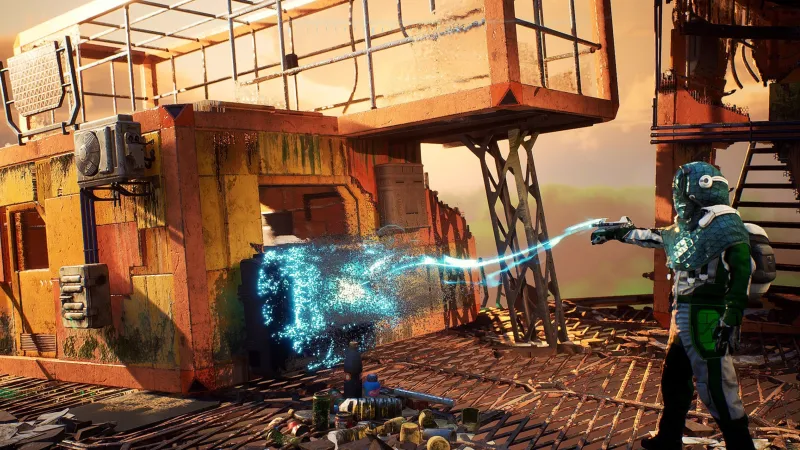What Gaming Technology and Reality TV Have in Common
In the ever-evolving landscape of entertainment, two distinct forms of media have captured the attention of millions: gaming technology and reality TV. While seemingly different in nature, these two mediums share surprising similarities that have contributed to their immense popularity. Both gaming technology and reality TV have revolutionized the way we interact with content and engage with narratives. This article explores the commonalities between gaming technology and reality TV, highlighting their impact on entertainment and society as a whole.
In this digital age, gaming technology and reality TV have captivated audiences around the world. Despite their differences, these two mediums share fundamental elements that make them incredibly engaging and influential. From interactive experiences to the blurring of boundaries between reality and fiction, let's dive into the exciting similarities between gaming technology and reality TV.
2. Interactive Engagement: Blurring the Lines
Both gaming technology and reality TV prioritize interactive engagement with their audiences. Gamers actively participate in gameplay, making decisions that impact the course of the story. Similarly, reality TV viewers engage by voting, participating in polls, and interacting with the show's contestants through social media. This interactivity creates a sense of agency and immersion, allowing individuals to feel invested in the experience.
3. Narrative Structures: Crafting Compelling Stories
Gaming technology and reality TV excel at crafting compelling narratives. Games present intricate storylines with well-developed characters, often featuring branching paths and multiple endings that cater to player choices. Reality TV shows employ skilled storytelling techniques to create captivating arcs for their participants, complete with character development, conflicts, and dramatic twists. These narrative structures keep audiences hooked and eager to uncover what happens next.
4. Immersive Experiences: Stepping into Alternate Realities
One of the most striking similarities between gaming technology and reality TV is their ability to transport individuals into alternate realities. Through virtual reality (VR) and augmented reality (AR), gaming technology enables players to step into immersive worlds, offering a sense of escapism and adventure. Reality TV shows, on the other hand, invite viewers to vicariously experience the lives of contestants, allowing them to witness new environments and cultures, ultimately blurring the lines between the real and the fictional.
5. Audience Participation: Shaping the Outcome
Both gaming technology and reality TV thrive on audience participation. Gamers often influence the outcome of the game through their choices, impacting the storyline, character relationships, and ultimate success or failure. Reality TV relies on viewers' votes and opinions, shaping the show's progression, evictions, and winners. This participatory aspect empowers the audience, making them active contributors to the content they consume.
6. Cultural Phenomenon: Fandom and Community
Gaming technology and reality TV have created strong fan communities and cultural phenomena. Gamers form communities, discussing strategies, sharing fan art, and participating in esports competitions. Reality TV enthusiasts passionately support their favorite contestants, engage in lively discussions, and even organize viewing parties. These communities foster a sense of belonging and connection, where individuals with similar interests come together to celebrate their shared passion.
7. Technological Advancements: Pushing Boundaries
Both gaming technology and reality TV constantly push the boundaries of technological advancements. Games have evolved from simple pixelated graphics to realistic, immersive experiences with cutting-edge graphics and physics engines. Similarly, reality TV has embraced innovative production techniques, such as live broadcasts, interactive elements, and augmented reality enhancements. These advancements enhance the overall quality and impact of the content, creating more memorable and captivating experiences for the audience.
8. Social Impact: Influencing Behavior and Perception
Gaming technology and reality TV have the power to influence behavior and shape public perception. Games can foster critical thinking, problem-solving skills, and teamwork among players. Reality TV can shed light on social issues, challenge stereotypes, and raise awareness on various subjects. Both mediums have the potential to shape societal attitudes, challenging preconceived notions and inspiring positive change.
9. The Future of Entertainment: Convergence of Gaming and Reality TV
As gaming technology and reality TV continue to evolve, we can expect to see a convergence of these two mediums. Virtual reality gaming experiences might incorporate reality TV elements, allowing players to engage with real-world scenarios and challenges. On the other hand, reality TV shows might integrate gamified elements, offering viewers opportunities to influence the storyline or participate in virtual competitions. This convergence has the potential to revolutionize the entertainment landscape, providing audiences with even more immersive and engaging experiences.
In conclusion, gaming technology and reality TV share numerous similarities that contribute to their widespread appeal. The interactive engagement, compelling narratives, immersive experiences, audience participation, cultural phenomena, technological advancements, and social impact make both mediums significant players in the world of entertainment. As these two forms of media continue to intersect and evolve, we can look forward to a future where gaming and reality TV merge, providing audiences with unprecedented levels of engagement and enjoyment.










 English (US) ·
English (US) ·